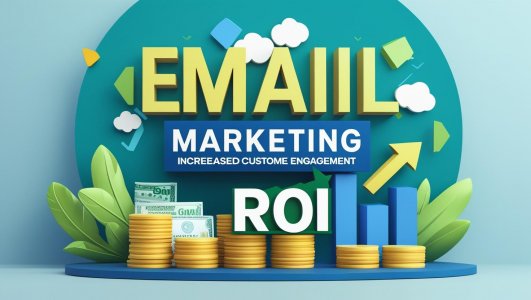- Jul 17, 2025
- 1
- 0
- First Name
- suchona
What Exactly is Email Marketing ROI?
Imagine you spend some money to plant seeds. Later, you harvest fruits that are worth much more than the money you spent. That extra value is like Return on Investment (ROI). In email marketing, ROI tells you how much profit you make for every taka you spend on your email campaigns. It's a simple way to see if your email efforts are paying off. A high ROI means your email marketing is working well and bringing in more money than it costs.
Why Calculating Email Marketing ROI is Crucial
Knowing your email marketing ROI is super important for several reasons. First, it helps you see the real value of your email campaigns. Are they just keeping your audience engaged, or are they actually making you money? Second, understanding your ROI helps you make smarter decisions about your marketing budget. You can invest more in the strategies that give you the highest returns. Moreover, a good ROI can show your boss or stakeholders that your email marketing strategy is effective and worth continued investment.
Key Elements to Calculate Email Marketing ROI
To figure out your email marketing ROI, you need to know a few key things. First, you need to know your total revenue generated from your email campaigns. This includes all the money you made from sales directly linked to your emails. Next, you need to know your total investment in email marketing. This includes the cost of your email platform, the time spent creating emails, any design costs, and any other expenses related to your email efforts. Once you have these two numbers, you can calculate your ROI.
Need high-quality email leads? If you want email lead, so, our site telemarketing data is the best place to start.
Calculating Total Revenue from Email Marketing
Tracking the revenue from your email campaigns is very important. You can do this in several ways. One way is to use unique tracking links in your emails. These links help you see which sales came from people who clicked on your email links. Another way is to offer exclusive discounts or codes to people who receive your emails. When they use these codes at checkout, you know the sale came from your email campaign. Make sure your tracking methods are accurate. This will give you a clear picture of your email revenue.
Determining Your Total Email Marketing Investment
Calculating your total investment involves adding up all the costs associated with your email marketing. This includes the monthly or annual fees you pay for your email marketing platform. Also, consider the time your team spends on planning, writing, designing, and sending emails. If you hire freelancers or agencies to help with your email marketing, include their fees as well. Don't forget any costs for images, templates, or other tools you use. Adding up all these expenses will give you your total investment.

Strategies to Skyrocket Your Email Marketing ROI
Now that you understand how to calculate ROI, let's talk about how to make it even better. Several strategies can help you increase the money you make from your emails while keeping your costs in check. By focusing on these areas, you can significantly improve your email marketing performance and see a much higher return on your investment.
Building a Highly Engaged Email List
The foundation of successful email marketing is a strong and engaged email list. Instead of buying lists (which is not a good idea!), focus on building your list organically. Offer valuable content like eBooks, guides, or webinars in exchange for email sign-ups. Make it easy for people to subscribe to your newsletter on your website. Segment your audience based on their interests and behaviors. This allows you to send more targeted and relevant emails, which leads to higher engagement and better ROI.
Crafting Compelling and Click-Worthy Emails
The content of your emails plays a huge role in your ROI. Write engaging and informative emails that provide value to your subscribers. Use clear and concise language that is easy to understand. Personalize your emails by using the subscriber's name and tailoring the content to their interests. Make sure your calls to action (CTAs) are prominent and tell people exactly what you want them to do. Test different subject lines, email layouts, and CTAs to see what works best for your audience.
Segmenting and Personalizing Your Email Campaigns
Sending the same email to everyone on your list is like shouting in a crowded room – most people won't pay attention. Segmentation involves dividing your email list into smaller groups based on specific criteria, such as demographics, purchase history, or website activity. Personalization goes a step further by tailoring the content of your emails to the individual subscriber's interests and needs. Segmented and personalized emails are more relevant, which leads to higher open rates, click-through rates, and ultimately, a better ROI.




